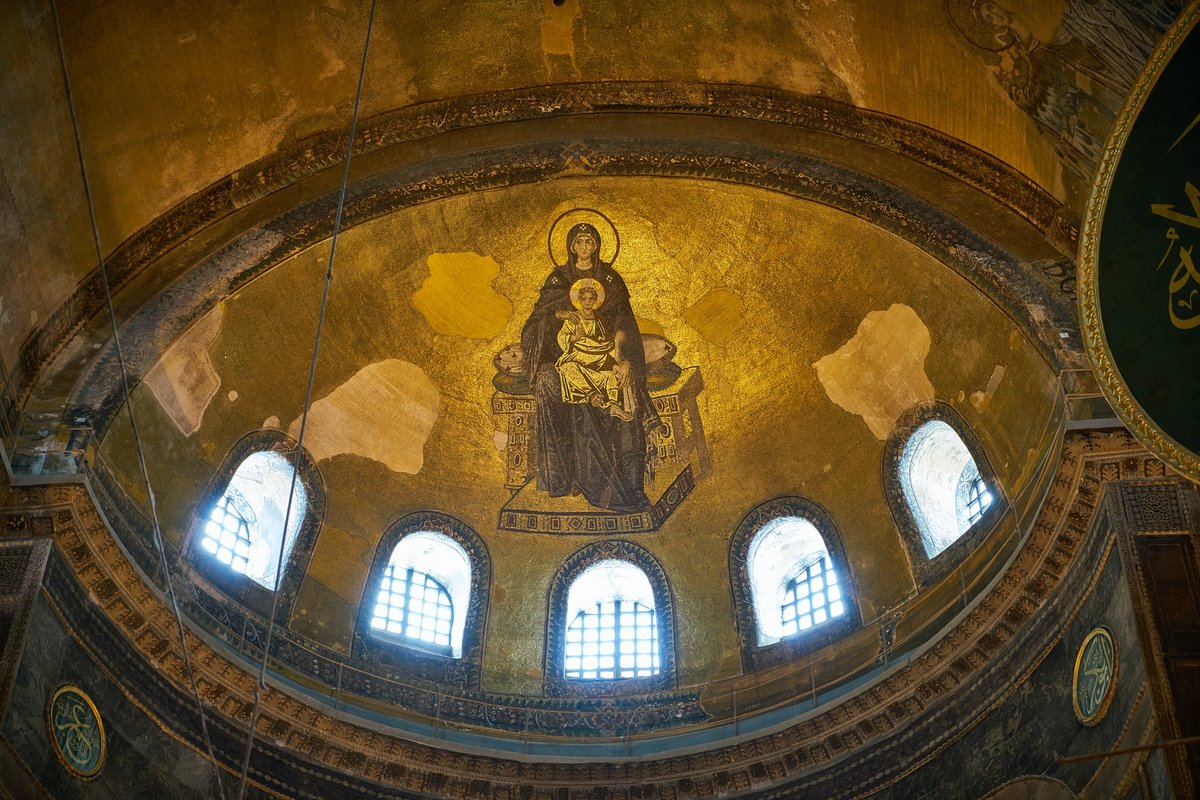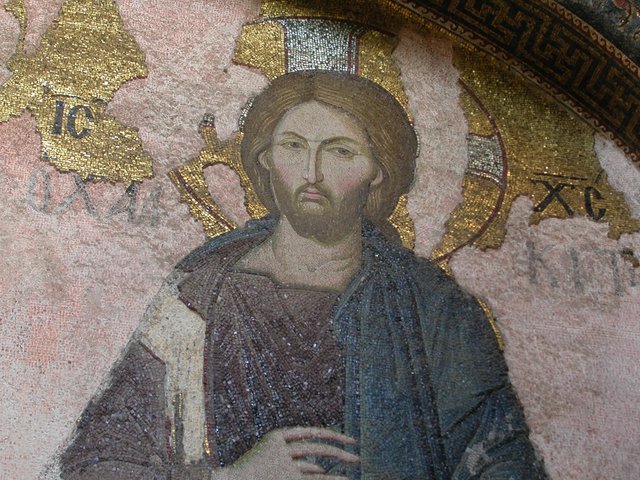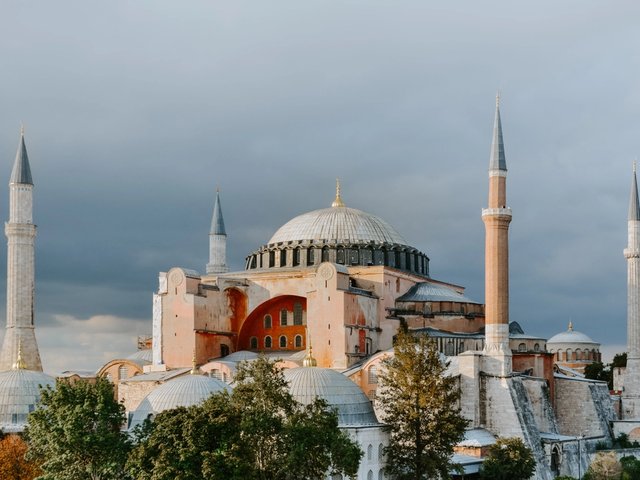Muslim prayers are due to be held on Friday at the Hagia Sophia in Istanbul for the first time since Turkish President Tayyip Ergodan decreed earlier this month that the heritage site would be turned back into a working mosque. On Sunday, after Erdogan visited the building to inspect construction work, presidential spokesman Ibrahim Kalin said that Byzantine mosaics depicting the Virgin Mary and the archangel Gabriel located in the direction Muslims face while praying, or Qiblah, would be covered with curtains, according to Reuters. When the Hagia Sophia is not being used by worshippers, the mosaics would be uncovered and the site would be open to all visitors and tourists, Turkish authorities previously said.
With its stunning golden background and details, the mosaic of the Virgin and Child is one of the most recognisable Byzantine works of art in the Hagia Sophia, which was originally built as a Christian church by the emperor Justinian in the sixth century. Installed in a quarter-dome on the eastern side in what was the church’s apse, the mosaic that visitors see today is believed to reconstruct an earlier work destroyed by iconoclasts. It was created in the ninth century under the emperors Michael III and Basil I, and likely heavily restored during the 14th century after earthquakes severely damaged the building. Depictions in arches of the two archangels Gabriel and Michael flanked the Virgin Mary, but only Gabriel remains.
Soon after Constantinople was sacked by Sultan Mehmed II’s Ottoman forces in 1453, the Hagia Sophia was turned into a mosque, and in the next century, under the reign of Sultan Suleiman I, the Christian mosaics and frescoes were plastered over. An ornate mihrab, or niche pointing towards Mecca, part of a major renovation of the mosque by the Swiss-Italian architect brothers Gaspare and Giuseppe Fossati in 1847-49, now stands below the Virgin and Child.
The American archaeologist Thomas Whittemore uncovered and restored the mosaics from 1935 to 1939. He was given access to the site through his friendship with the first president of the Turkish Republic, Mustafa Atatürk, who is credited with secularising the country and turned the Hagia Sophia into a museum.
Other mosaics include one above the Imperial Door on the western side, which depicts the Emperor Leo VI kneeling next to Jesus Christ, and several showing other Byzantine emperors with Christian figures in the southern gallery. Kalin, the presidential spokesman, said these do not present an obstacle for Muslim prayers, but he did not specify whether they would remain uncovered at all times.
In a letter sent to the US State Department last week, Gary Vikan, a Byzantine specialist, former director of the Walters Art Gallery in Baltimore and the president of the Committee for Cultural Policy, wrote of his "grave concern for the profoundly important Byzantine mosaics on the walls of Hagia Sophia—for access by the public to those mosaics, and for their very survival." Speaking to The Art Newspaper, Vikan said that while it is "good news" that the mosaics would remain on visible most of the time, "there's nothing that stands between an iconoclast and the mosaics. They're eminently accessible." Vikan added that his main worry is that the authorities now in charge of the site could lose control of the situation, or turn a blind eye to looters or extremist destruction.
In his letter, Vikan cited the plundering of mosaics from the sixth-century church of Panhagia Kanakaria in Northern Cyprus during the Turkish invasion of 1974. "Certainly the Turkish military authorities knew what was going on. There's no question about it," he says. "And, sure, we didn't have the internet then and we weren't quite as in tuned as we are now to art smugglers, but that went on for years and anybody who cared to know about it, knew about it."




